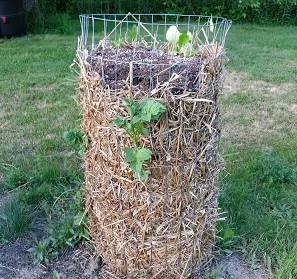When To Plant Potatoes:
Potatoes may be planted as soon as the ground can be worked in the early spring, but keep soil temperatures in mind. Potato plants will not begin to grow until the soil temperature has reached 45 degrees F. The soil should be moist, but not water-logged.
Potatoes can tolerate a light frost, but you should provide some frost protection for the plants if you know that a hard, late season freeze is coming. If you want to extend storage times, and have a long growing season, you can plant a second crop as late as June 15 and harvest the potatoes as late as possible.
How to Water Potatoes:
Keep your potato vines well watered throughout the summer, especially during the period when the plants are flowering and immediately following the flowering stage. During this flowering period the plants are creating their tubers and a steady water supply is crucial to good crop outcome. Potatoes do well with 1-2 inches of water or rain per week. When the foliage turns yellow and begins to die back, discontinue watering. This will help start curing the potatoes for harvest time.
When to Harvesting Potatoes:
Baby potatoes typically can be harvested 2-3 weeks after the plants have finished flowering. Gently dig around the plants to remove potatoes for fresh eating, being careful not to be too intrusive. Try to remove the biggest new potatoes and leave the smaller ones in place so they can continue to grow. Only take what you need for immediate eating. Homegrown new potatoes are a luxury and should be used the same day that they are dug.
Potatoes that are going to be kept for storage should not be dug until 2-3 weeks after the foliage dies back. Carefully dig potatoes with a sturdy fork and if the weather is dry, allow the potatoes to lay in the field, unwashed, for 2-3 days. This curing step allows the skins to mature and is essential for good storage. If the weather during harvest is wet and rainy, allow the potatoes to cure in a dry protected area like a garage or covered porch.











